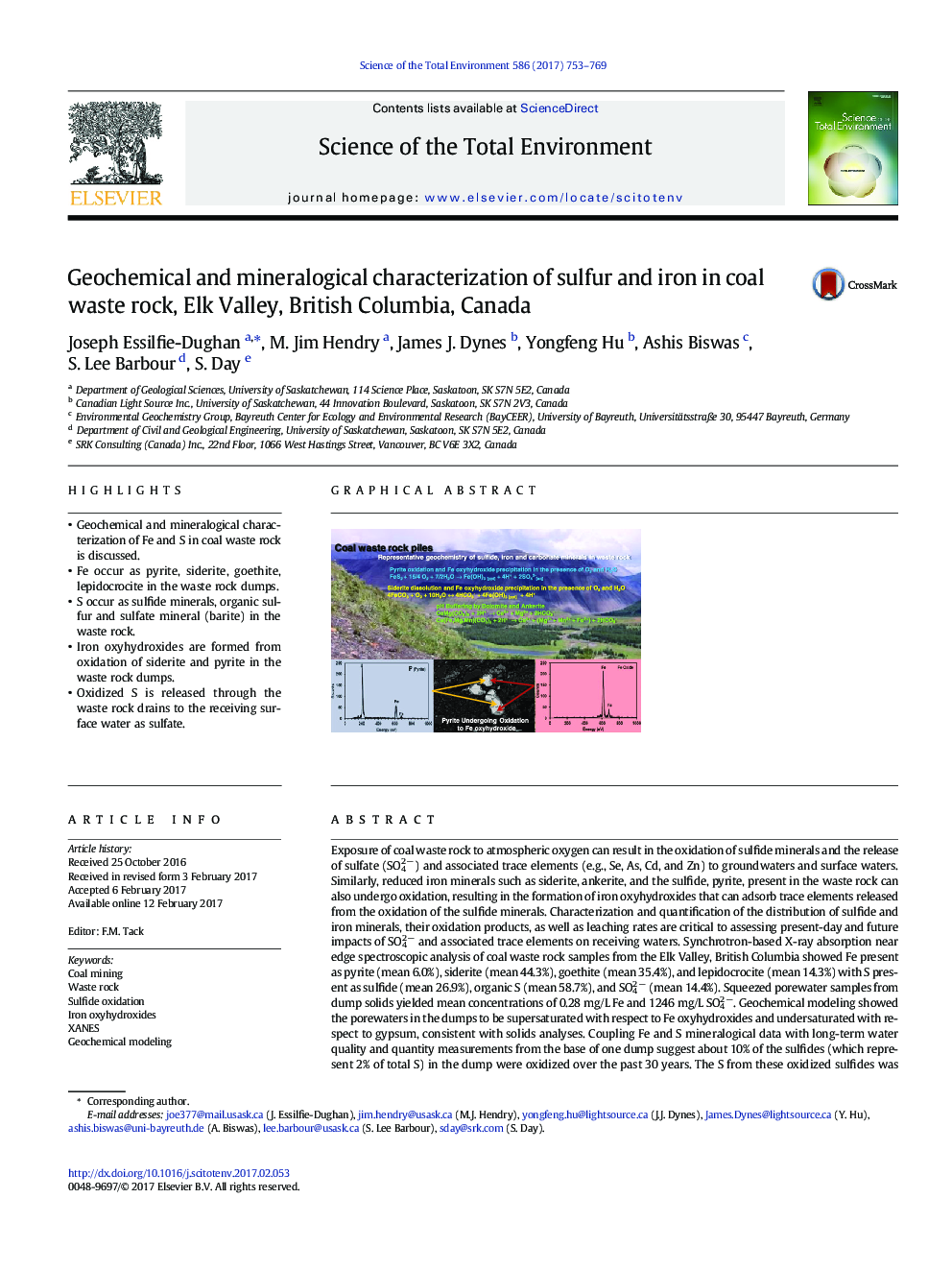| کد مقاله | کد نشریه | سال انتشار | مقاله انگلیسی | نسخه تمام متن |
|---|---|---|---|---|
| 5751170 | 1619707 | 2017 | 17 صفحه PDF | دانلود رایگان |

- Geochemical and mineralogical characterization of Fe and S in coal waste rock is discussed.
- Fe occur as pyrite, siderite, goethite, lepidocrocite in the waste rock dumps.
- S occur as sulfide minerals, organic sulfur and sulfate mineral (barite) in the waste rock.
- Iron oxyhydroxides are formed from oxidation of siderite and pyrite in the waste rock dumps.
- Oxidized S is released through the waste rock drains to the receiving surface water as sulfate.
Exposure of coal waste rock to atmospheric oxygen can result in the oxidation of sulfide minerals and the release of sulfate (SO42 â) and associated trace elements (e.g., Se, As, Cd, and Zn) to groundwaters and surface waters. Similarly, reduced iron minerals such as siderite, ankerite, and the sulfide, pyrite, present in the waste rock can also undergo oxidation, resulting in the formation of iron oxyhydroxides that can adsorb trace elements released from the oxidation of the sulfide minerals. Characterization and quantification of the distribution of sulfide and iron minerals, their oxidation products, as well as leaching rates are critical to assessing present-day and future impacts of SO42 â and associated trace elements on receiving waters. Synchrotron-based X-ray absorption near edge spectroscopic analysis of coal waste rock samples from the Elk Valley, British Columbia showed Fe present as pyrite (mean 6.0%), siderite (mean 44.3%), goethite (mean 35.4%), and lepidocrocite (mean 14.3%) with S present as sulfide (mean 26.9%), organic S (mean 58.7%), and SO42 â (mean 14.4%). Squeezed porewater samples from dump solids yielded mean concentrations of 0.28 mg/L Fe and 1246 mg/L SO42 â. Geochemical modeling showed the porewaters in the dumps to be supersaturated with respect to Fe oxyhydroxides and undersaturated with respect to gypsum, consistent with solids analyses. Coupling Fe and S mineralogical data with long-term water quality and quantity measurements from the base of one dump suggest about 10% of the sulfides (which represent 2% of total S) in the dump were oxidized over the past 30 years. The S from these oxidized sulfides was released to the receiving surface water as SO42 â and the majority of the Fe precipitated as secondary Fe oxyhydroxides (only 3.0 Ã 10â 5% of the Fe was released to the receiving waters over the past 30 years). Although the data suggest that the leaching of SO42 â from the waste rock dump could continue for about 300 years, assuming no change in the rate of oxidation of sulfides, SO42 â is currently not a concern in receiving surface waters as the concentration levels are below regulatory limits.
370
Journal: Science of The Total Environment - Volume 586, 15 May 2017, Pages 753-769